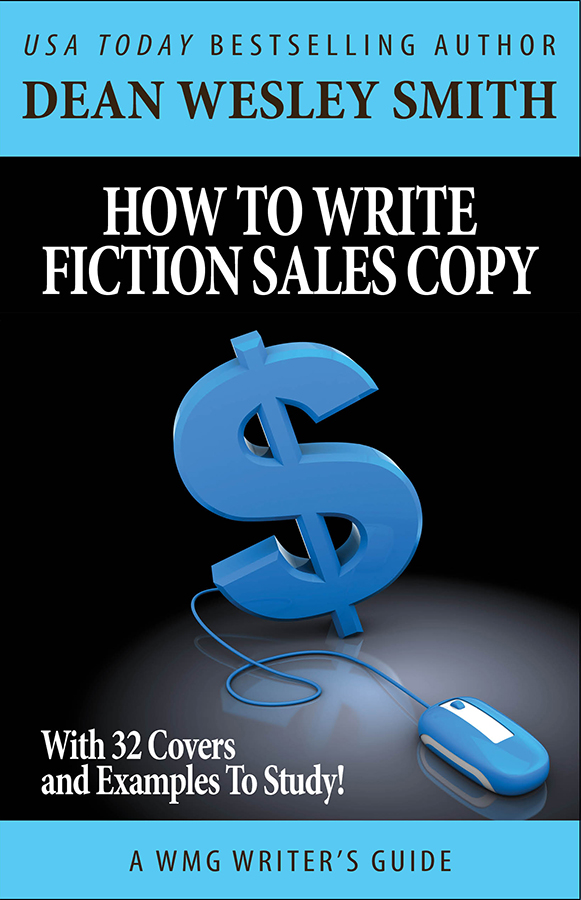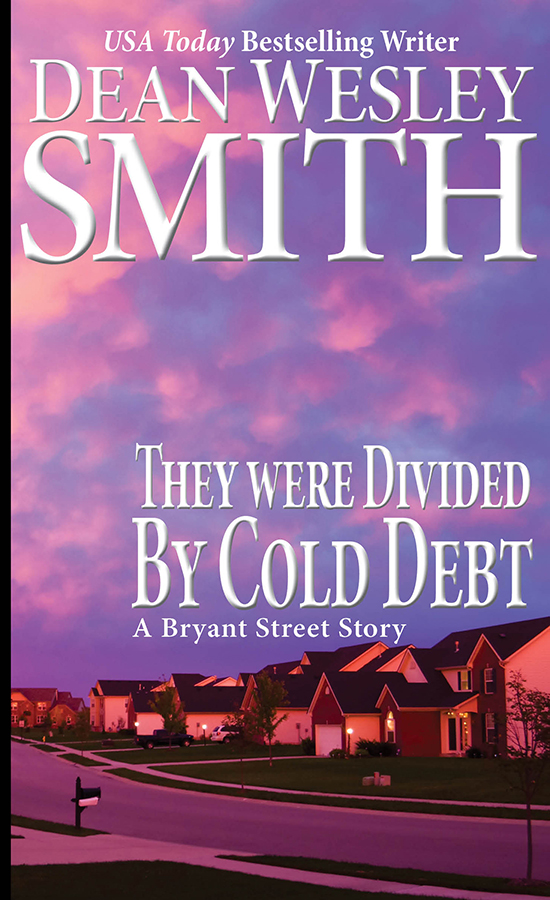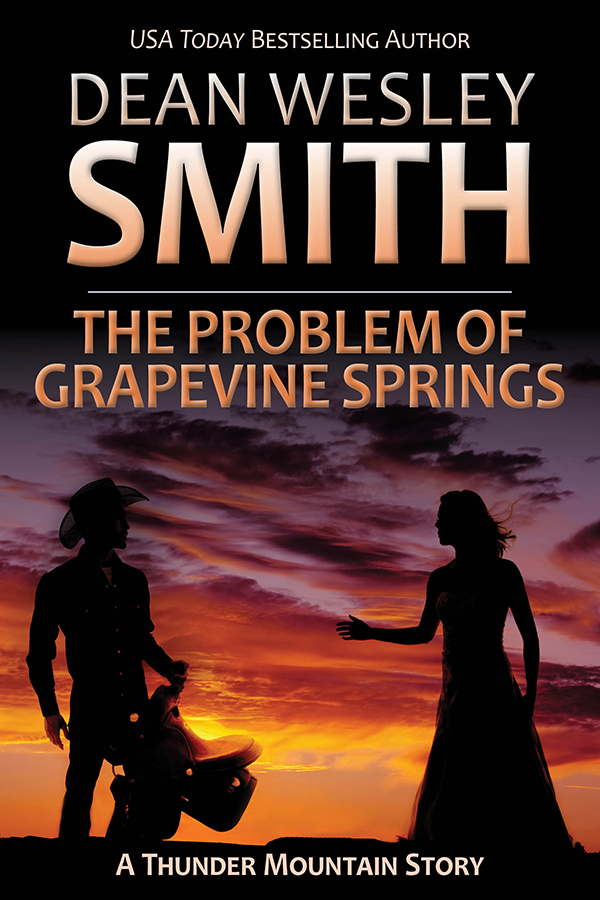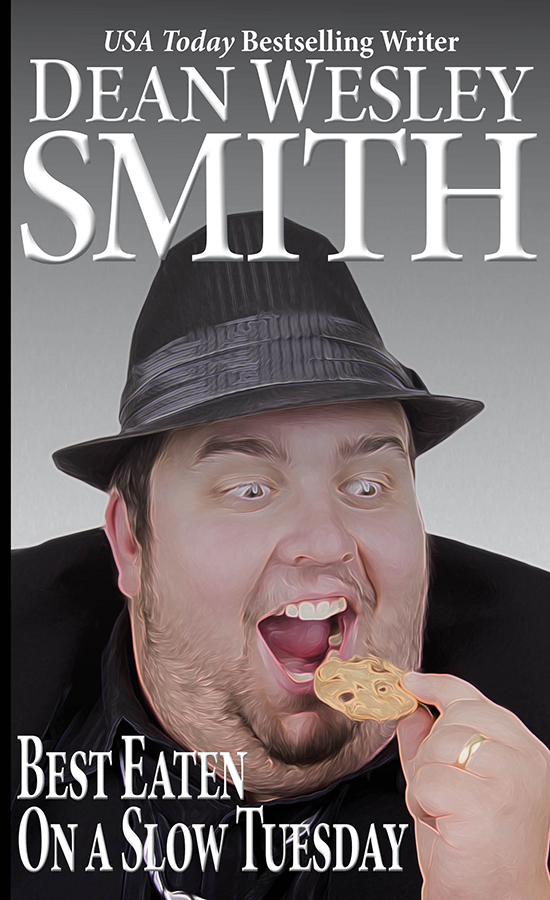How to Write Fiction Sales Copy: Chapter Two
HOW TO WRITE FICTION SALES COPY
CHAPTER TWO
(Summary. This book is coming about because I need to write 32 story blurbs for the 32 short stories I wrote in July for a book titled Stories from July.)
In the first chapter of this book, I touched on what I call “The Author Problem” and gave a basic formula that I sometimes use to give blurbs a structure.
One point right now before I jump down into more of these. I got a question from two people privately, wondering where I would use these blurbs exactly.
So here is exactly how I plan to use all of these.
— Introduction to each story in the book Stories from July.
— Introduction to each story when I late put them in Smith’s Monthly magazine.
— Introduction to each story in a collection that contains one of these stories.
— Sales copy on all electronic and paper sales sites. Amazon, B&N, iBooks, Kobo, and so on. Including Smashwords. These are just barely over 400 characters, so shouldn’t be hard to get them down a ways.
— The sales copy on the back of the paperback of each story. Yes, even the short ones will be stand-alone paperbacks.
So now onward to some more stories.
Then for each one I will detail out my thinking while writing the blurb.
—

They Were Divided by Cold Debt: A Bryant Street Story
Bryant Street, a standard subdivision street, haunts us all. To escape Bryant Street often takes real courage.
Meet Neil Prendell. He made a mistake. He lost his job but avoided telling his wife. Instead, he pretended to go to work while looking for another job.
Pride? Fear? Stupidity? The reason no longer mattered. He paid the price.
A price that only made sense in the twisted logic of Bryant Street.
—
My Bryant Street stories are the hardest stories I have to blurb every time. Think Twilight Zone without Rod Serling explaining everything through a cloud of smoke.
Bryant Street is based on my complete fear of subdivisions and the trap, the prison they form for so many. So I write stories set in those homes along the street.
As Stephen King often says, “Write what scares you.” Subdivisions scare hell out of me.
So I went to the form I talked about last chapter and first gave a summary of Bryant Street in general and vague terms.
Second paragraph, I played off the Twilight Zone pattern with the first line, then gave the plot from the first few paragraphs of the story.
Third paragraph I raised the stakes to make readers wonder what price did he pay. And from the first paragraph, did he have the courage to escape.
Fourth paragraph I went back to Twilight Zone rip to make sure readers understood Bryant Street is a very strange and dangerous place.
—

The Problem of Grapevine Springs
Duster Kendal lost an Idaho mining town called Grapevine Springs. In 2020 he knew the town, spent time there. In 1901 the valley sat empty.
The town never existed. Not possible.
Duster needed to get back to the year 2020 to solve the mystery of the lost mining town.
A stand-alone story that introduces a new mining town and new characters into the Thunder Mountain world of westerns and time travel.
—
I used what I call “The Hook” structure on this one due to the fact that Thunder Mountain novels and stories are well established. So I needed to get across to Thunder Mountain readers the idea, but also do enough to attract a non-reader of the series.
(I’ll talk more about this structure later in the chapter.)
So I made the first paragraph a plot focus with the crazy plot hook of losing an entire town.
Then I punched that plot hook in the second paragraph.
Then the third paragraph established the story solidly as time travel, with a mystery element, still using the hook from the first page of the story.
The fourth paragraph made sure that I told readers of the series this was a stand-alone story and again punched the time travel aspect of the genre.
So in this one I stayed with four paragraphs, but focused on a plot hook. Just one element of plot. The hook of the plot actually. Never once did I put in an “and then this happens…” silliness.
Writing blurbs in established series is often a trick.
—

Best Eaten on a Slow Tuesday
Mark Estes flaunted his money, abused his power, cheated on his wife, and most of all loved to eat.
Warned that a dozen sugar cookies would kill him, he ate them anyway.
So how would Mark Estes deal with the ultimate diet challenge?
A story that answers the simple question: Do diets come from hell?
—
Between the blurb and the cover, you get a pretty good idea of the subject of this story.
I approached the story first from the idea that everyone understands the problems of weight, but tossed that. Sometimes generalizing readers helps, but other times not so much. This was a not-so-much time.
I finally went to the focus of telling what the story is about. Not the plot. Just the hook.
The story is about eating and ego. Or not eating and ego.
So first paragraph set the character. Second paragraph set the first page problem and hook.
Third paragraph hinted at something more without going into detail of what the ultimate diet challenge really was.
Last paragraph then played into what we all believe, that diets come from hell. And with luck gave the story just a hope of someone buying it.
Fighting upstream against topic with this one.
On this story, I had to fight for a moment the “Author Problem” of knowing nifty details of the story and wanting to put those nifty details in the blurb. In fact, the nifty details are what makes the story fun and cool, but if I put even one of them in the blurb, the story would be ruined for readers.
—

A Matter for a Future Year
A single Seeder scout ship trapped on the edge of a distant, uncharted galaxy. Chairman Peter German holds the fate of the three thousand people on the Pale Light.
Main drives mysteriously not working, the ship hobbles along at sub-light speed with not enough supplies to reach the nearest Earth-like planet
The Chairman faces a hard, hard choice. He must find the solution.
Galaxy spanning ships, billions of civilizations, the Seeder Universe stories and novels cover it all. But “A Matter for a Future Year” brings it all down to a single human choice. And the price paid by those who risk to explore outward.
—
This was the second Seeders Universe story in the first week. This one in deep space, the other one set firmly on a devastated Earth. It’s a very large universe I am writing books in, that’s for sure.
And the key with large universes is always bringing the story down to a human level. An understandable level.
So on this one, I started with the first-page-of-the-story problem and the character, trying quickly to brush stroke the main character’s problem.
That took three paragraphs. And it was the hook of the first page of the story. Nothing more.
Then I dropped back into giving a blurb about the entire Seeders Universe, making it crystal clear this story is on the human levels of being in space.
So the structure of blurbs I used in the first chapter of this book is not evident at all.
A Second Basic Structure
As shown in three of the blurbs in this chapter, the second basic structure is what I tend to call “The Hook” structure.
The opening page of a story, or opening chapter of a novel, has a great hook that will pull readers in.
Then, in this structure, get a character (readers always read for character) and relay the hook and nothing more in two quick, short paragraphs.
Punch with a third paragraph if possible.
Summary of the theme, why readers would want to read the story, in the last paragraph.
Again four paragraphs. All short. With punch.
Author Problem Check
Did I get into any author problem here?
Were there any passive verbs in any of the four blurbs?
Did I once go “and then this happens” with the plot I did reveal?
I think all four of them don’t have any author problems, but I did have some trouble writing one. If I hadn’t been paying attention, I might have tossed in too much plot.
Onward to more blurbs.
17 Comments
Robin Brande
Dean, these are GREAT. What a terrific tutorial. Thank you!
Vera Soroka
I notice this done on a lot of YA novels. They take an excerpt out of the novel and place it on the back of the book. Is that okay or is that cheating? I see it a lot. Also another Indie romance writer I follow writes in first person present tense so she writes her description that way as well. I thought it was an excerpt as well but I don’t think so now. I think she is just writing the description from that character’s point of view. Is that okay to do or that isn’t really a sales copy ?
dwsmith
We often take a paragraph or two that has a punch from the first three or four pages and put in at the front of the book, inside, often first page. But back of the book? Wow, lazy, just lazy on the editor’s point.
And first person present tense is off-putting to readers. So not sure if you would ever do that in a blurb, since the goal is to draw readers in, not push them away.
Lee Allred
Trick I use is to adapt Algis Budrys’ Seven-Part Story for blurb writing.
Blurbs should be capsule summaries of the first three parts: Character in Context with a Problem. Story parts 1, 2, 3.
If you’re including parts 4,5,6—the try-fail cycles—you’re deep in the weeds of plot-telling. (And if you’re including part 7—the validation—you’re blabbing “the butler did it” spoilers.)
1. Character in Context with a Problem.
2. No passive voice.
3. Strong hookline for the blurb’s last line (pun or catchy catchphrase preferable).
dwsmith
Exactly Lee. Exactly. Thanks!
Linda Jordan
Dean thanks so much for this. These two chapters clarify a lot for me. I’ve never thought of blurbs as having a structure. Duh.
And You’ve given me more reasons that I need to read the stories. A blue body, scary suburbs and a huge universe!
And I need to take the pitches & blurbs workshop. Will try to pry some money loose.
Timothy L. Cerepaka
This is sort of off-topic, but Dean, I noticed that the cover for your story, \”A Matter for a Future Year,\” has the exact same cover art as the covers for the comedic science fiction action adventure serial I am writing under the pen name T.L. Charles. Here\’s the link to the Amazon page for Episode One if you don\’t believe me: http://www.amazon.com/gp/product/B0139X8F2E?*Version*=1&*entries*=0
There are a few differences (for example, the cover for your short story has the image flipped), but they are otherwise recognizably the same. Odd coincidence, though I guess it\’s to be expected when you use stock photos for your cover art (not that I am complaining or think this is bad, however. Just an observation).
dwsmith
Timothy, yes expected with stock art. What people don’t realize is that this has been happening since the beginning of publishing.
But don’t you love the aspect that we both have such good taste in art. (grin) And we got such a top piece of art for $15 or so.
Damn I love this new world and things like this don’t bother me at all. I hope your serial is doing great.
dwsmith
Tomothy, you should have flipped the art. Remember readers and art viewers always start at the top left and work to the lower right. As much as possible, you want their eye moving to the lower right to get them to feel good about turning the page and opening the book. It’s why a lot of titles are sometimes flush right bottom, so readers turn the page.
So art and font elements should work to the lower right as much as possible. If you had flipped the ship, the eye would follow along the ship to lower right and got people into the book.
One of the tricks of book covers. (grin)
Timothy L. Cerepaka
Not sure if this comment got through (browser messed up on me when I tried to post it earlier):
Huh. I did not know that about book covers, Dean, but now that you mention it, I do see what you’re talking about on the covers of several books I own (not my own books, but the books of other writers). I’ll make sure to keep that in mind when approving the covers that my designer shows me.
Anyway, the serial is doing well. Episode One is getting a ton of free downloads, even without any heavy promotion on my part, and I even got a few newsletter subscribers for the pen name, but sell-through to the next episodes is practically nonexistent. I’m going to do some promotion for it this month and see if that might increase its sell-through rate. Always fun trying new things as a writer.
dwsmith
I hope the designer didn’t charge you very much on that cover if they couldn’t even get the art focused right.
And cool that it’s doing well. Keep having fun.
Timothy L. Cerepaka
He’s a Fiverr cover designer, so the cover was pretty cheap. I’m going to go back to him to do the covers for Season Two, but maybe next time I’ll go and tell him to flip the cover art like you suggested.
dwsmith
Only if the art needs to be pointed at the lower right and isn’t. It takes an eye to see how elements of art and typography line up to get a reader to open a book. I just was hoping you weren’t paying for someone that claimed to be a book cover expert and then made that basic mistake.
Blank
Ta very muchly as always. I’m having to write back cover blurb for historical fantasy and romance written by someone else today so this is greatly appreciated. Do you bother with the longer descriptions that you can do in addition to these? I am wary of them because of the temptation to want to fill in the space with plot details that are counterproductive.
Final aside, slightly OT: You were right about covers when you told me I’d be better off dong them myself in some ways. 2hrs on a mac at work and I could produce something that did not annoy me. Never used any of the adobe suite of products before but wow, if you read the manual and ask google the right questions you can do some amazing stuff. Only trouble now is explaining to the friend that I’ll actually enjoy doing it myself. That and quietly changing the covers we have already used without telling them 😛
Thanks as always
Blank
dwsmith
No reason to use much more than I am using. And if you do, add in things like “Author of the Acclaimed ___ Series.” Things like that. But why would you need longer??? Readers will just scan and that’s not what you want any buyer doing is scanning. Ever.
And it is amazing how going at InDesign for a cover with an attitude of having fun and either using Google or Lynda.com for help can produce covers. I tell people to put a modern cover in their genre beside them and just follow the patterns and font use to start. Few do that for some reason, but it works every time.
Phyllis Humphrey
How can I get a copy of HOW TO WRITE FICTION SALES COPY? Is it a book, a pamphlet? An article? How much is it?
dwsmith
Phyllis, I’m just writing it here at the moment. This fall it will be out in book form, but right now I am just writing it right here in public.